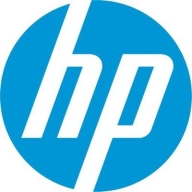

Cybereason Endpoint Detection & Response and HP Wolf Security are two prominent cybersecurity solutions competing in the endpoint security category. Based on the results of user feedback, Cybereason seems to have the upper hand in terms of support and pricing satisfaction, whereas HP Wolf Security excels in advanced features.
Features: Cybereason offers comprehensive threat detection capabilities, rapid response time, and user-centric design. HP Wolf Security delivers enhanced isolation technology, real-time threat protection, and innovative security measures.
Room for Improvement: Cybereason could benefit from better documentation, more frequent updates, and improved user interface design. HP Wolf Security could improve integration processes with existing systems, enhance its dashboard for better analytics, and streamline overall usability.
Ease of Deployment and Customer Service: Cybereason is favored for its straightforward deployment and responsive customer service. HP Wolf Security faces challenges with complex deployment processes but is noted for its supportive and knowledgeable customer service.
Pricing and ROI: Cybereason offers competitive pricing with quick ROI, making it cost-effective for users. HP Wolf Security, while pricier, provides substantial ROI through superior security features, with users feeling satisfied with its overall value despite the higher cost.
| Product | Market Share (%) |
|---|---|
| HP Wolf Security | 5.9% |
| Cybereason Endpoint Detection & Response | 0.9% |
| Other | 93.2% |
| Company Size | Count |
|---|---|
| Small Business | 5 |
| Midsize Enterprise | 4 |
| Large Enterprise | 13 |
| Company Size | Count |
|---|---|
| Small Business | 3 |
| Large Enterprise | 5 |
Cybereason's Endpoint Detection and Response platform detects in real-time both signature and non-signature-based attacks and accelerates incident investigation and response. Cybereason connects together individual pieces of evidence to form a complete picture of a malicious operation.
HP Wolf Security is a comprehensive cybersecurity solution that bolsters your organization's cyber-resilience on multiple fronts. With its full-stack security approach, it ensures layered protection from hardware to the cloud, providing a robust defense against cyber threats. HP Wolf Security introduces endpoint isolation, a cutting-edge feature that effectively halts threats that may go unnoticed by Next-Generation Antivirus (NGAV) and Endpoint Detection and Response (EDR) systems. Moreover, it extends its security coverage to printers, equipping them with advanced detection and self-healing capabilities to further safeguard your digital ecosystem. This integrated solution streamlines IT and security risk management, resulting in fewer alerts and false positives, and reduces the time and effort required for endpoint incident analysis and remediation. Notably, HP Wolf Security prioritizes productivity, allowing you to manage risk without disrupting the user experience, enabling worry-free work from anywhere, and offering rapid IT disaster recovery at scale.
We monitor all Endpoint Protection Platform (EPP) reviews to prevent fraudulent reviews and keep review quality high. We do not post reviews by company employees or direct competitors. We validate each review for authenticity via cross-reference with LinkedIn, and personal follow-up with the reviewer when necessary.